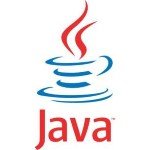serverless architecture pros and cons for startups
Serverless Architecture for Startups: Practical Pros, Real Risks, Clear Choices
A senior analyst’s guide to when serverless accelerates startup velocity—and when containers or hybrid win. Data-backed, tool-aware, and deployment-ready.
Market Overview
In 2025, startups increasingly adopt serverless architecture—Function-as-a-Service (FaaS) and managed Backend-as-a-Service (BaaS)—to reduce operational overhead and speed delivery. Providers handle provisioning, patching, and automatic scaling, letting teams focus on code and product delivery[5]. Serverless is particularly advantageous for event-driven, spiky, or unpredictable workloads due to pay-per-execution economics and fine-grained scaling[5]. Case studies and industry analyses highlight faster time-to-market (reports cite up to two-thirds reduction in certain scenarios) and lower operational effort, though results vary by workload and team maturity[4]. While advocates tout dramatic cost savings for lean teams, a balanced view in 2025 shows hybrid strategies—serverless for event-driven/background tasks, containers or VMs for steady high-load services—often optimize both cost and performance[5].
Technical Analysis
Execution model and platforms. Leading platforms include AWS Lambda, Google Cloud Functions, Azure Functions, and edge-oriented Cloudflare Workers, each with distinct limits, runtimes, and integration ecosystems[3][5]. Lambda’s event sources (e.g., SQS, API Gateway, EventBridge) and IAM controls are mature; Azure integrates tightly with Event Grid and Durable Functions; GCP offers CloudEvents and Cloud Run for container-based serverless (complementary to functions)[3][5].
Performance characteristics. Cold start latency remains a key consideration, driven by runtime initialization and networking. Modern platforms reduce cold starts via provisioned concurrency or keeping workers warm, but costs rise with these mitigations[5][3]. For bursty traffic (e.g., a marketing spike causing 10,000 concurrent invocations), serverless absorbs load without pre-provisioning, but you should validate tail latency under cold-start scenarios and external dependency throttles[1][5].
Cost model. Serverless typically charges per request/invocation and compute duration (GB-seconds), plus costs for ancillary services (API gateways, queues, databases). This aligns well with spiky or low-to-moderate steady traffic. For consistently high throughput, long-running workloads, or heavy CPU/GPU tasks, containers/VMs can be cheaper at scale; many teams therefore use serverless selectively[5]. Claims of 70–80% savings appear in marketing and some practitioner writeups, but net savings depend on request volume, memory sizing, and architecture choices[1][4][5].
Developer experience and tooling. The serverless ecosystem matured: Serverless Framework, AWS SAM, and Functions Frameworks streamline packaging, deployment, and local testing; observability via OpenTelemetry and commercial APM tools (e.g., Datadog) helps with distributed tracing[5]. However, debugging event-driven flows, versioning async interfaces, and managing least-privilege IAM remain non-trivial. Startups must plan for CI/CD, IaC, and policy-as-code early to avoid drift.
Security model. Providers patch the underlying fleet, reducing undifferentiated heavy lifting. You still own identity and access management, secret handling, data encryption, input validation, and supply-chain security. Granular function-level permissions improve blast-radius isolation, but misconfigured roles or public endpoints can widen exposure. Centralized secrets (e.g., AWS Secrets Manager) and signed artifacts should be standard.
Competitive Landscape
Serverless vs Containers vs VMs. Compared with containerized microservices, serverless removes cluster management and capacity planning, but you trade away fine-grained control over runtime, networking, and latency budgets. Containers (e.g., on Kubernetes or Cloud Run) shine for long-lived services, custom runtimes, and predictable high loads. VMs suit specialized dependencies, legacy stacks, or regulated workloads requiring full OS control. A hybrid approach—serverless for event triggers, background jobs, scheduled tasks, and glue code; containers for APIs requiring strict latency SLAs—often yields the best TCO and developer velocity[5].
Edge serverless (e.g., Cloudflare Workers) brings compute closer to users for low-latency personalization and caching, but with different runtime constraints (e.g., V8 isolates, limited execution time) and a distinct developer model, which may or may not fit your backend services[3].
Implementation Insights
Workload fit. Favor serverless for: event-driven pipelines (webhooks, file ingestion), background processing, scheduled jobs, real-time notifications, transactional email, image/video transcoding bursts, and MVP features where reducing time-to-market outweighs per-request cost variability[5][3]. For latency-sensitive APIs (< 50–100 ms p95), consider provisioned concurrency or a container-based service for the hot path, keeping serverless for asynchronous tasks[5].
Architecture patterns. Use event choreography with queues and event buses to decouple producers/consumers, enforce idempotency, and add dead-letter queues. Keep functions stateless; persist state in managed stores. Define contracts using CloudEvents or OpenAPI to stabilize interfaces across teams[5].
Data and state. Pair functions with managed databases/streams (e.g., DynamoDB, S3, Pub/Sub). Watch out for connection management to SQL backends; use connection pooling proxies or serverless-native data services to avoid exhausting connections under concurrency bursts.
Performance and cost tuning. Right-size memory/CPU for each function, set timeouts appropriately, and enable concurrency controls to protect downstreams. Consider provisioned concurrency only for the few functions on critical latency paths, and measure the incremental cost vs SLA benefit. Instrument everything with tracing and structured logs; adopt sampling to manage cost[5].
Operations and governance. Enforce least-privilege IAM per function, centralize secrets, and scan dependencies. Use IaC (e.g., SAM/CloudFormation/Terraform) with review gates. Establish SLOs and budgets per service; couple them with alerts that include business context (e.g., cost per signup). For regulated data, map data flows and ensure encryption and retention policies are enforced by managed services.
Real-world challenges. Expect cold starts during off-hours deployments, throttling from downstream SaaS APIs, noisy-neighbor latency if external dependencies are not sized, and test flakiness in local emulators vs cloud events. Address these with canary deploys, backoff/retry strategies, and synthetic probes that exercise end-to-end event paths.
Expert Recommendations
When serverless is a strong default for startups. If your product is early-stage, workloads are spiky/uncertain, and team size is small, start with serverless for event-driven components and non-critical APIs. Use managed services to minimize ops toil and accelerate launches[5][4].
When to prefer containers or hybrid. If you have strict p95 latency SLAs, sustained high QPS, specialized dependencies, or predictable workloads, anchor core APIs on containers/VMs and integrate serverless for asynchronous tasks and glue code[5].
Guardrails for success. Define a cost model early (requests, GB-seconds, egress, API gateway), implement tracing from day one, and apply least-privilege IAM. Pilot with 2–3 representative functions, measure cold/warm latencies, and decide whether provisioned concurrency is justified. Standardize deployment with SAM or the Serverless Framework; codify policies and budgets in IaC pipelines[5].
Outlook for 2025–2026. Expect continued improvements in cold-start mitigation, platform limits, and observability, plus wider adoption of event standards and edge/serverless convergence. Startups will increasingly adopt hybrid serverless to balance cost, performance, and control[5][4].
Recent Articles
Sort Options:

A Comprehensive Comparison of Serverless Databases and Dedicated Database Servers in the Cloud
The article explores the transformative impact of cloud computing on data management, highlighting the critical decision between traditional dedicated database servers and innovative serverless databases, emphasizing their implications for infrastructure, performance, and operational efficiency.

Creating Serverless Applications With AWS Lambda: A Step-by-Step Guide
Serverless architecture revolutionizes application development by removing infrastructure management, enabling developers to concentrate on coding. This tutorial explores creating a simple serverless application using AWS Lambda and API Gateway, highlighting the benefits of serverless computing.

Serverless Java at Scale: Optimizing AWS Lambda or Google Cloud Functions for Latency and Memory
Serverless computing offers a revolutionary way to execute code without server management, but Java's high startup time and memory demands can hinder performance. The publication delves into optimization strategies to enhance Java's efficiency in serverless environments.

Optimizing Cloud Costs With Serverless Architectures: A Technical Perspective
The article examines how serverless computing, particularly Function-as-a-Service (FaaS), revolutionizes cloud architecture by reducing costs through a pay-per-use model. It highlights cost optimization techniques and showcases practical case studies in large-scale applications and latency-sensitive services.

Serverless vs Containers: Choosing the Right Architecture for Your Application
Choosing the right architecture is vital for cost-effective, high-performance, and scalable applications. The article explores serverless and container-based architectures, detailing their unique features, use cases, and providing code examples for better understanding.

Serverless Spring Boot on AWS Lambda Using SnapStart
AWS Lambda SnapStart transforms the deployment of Spring Boot applications by significantly reducing cold start times, making it a viable option for high-performance serverless workloads. The authors delve into this innovative solution and its impact on serverless architecture.